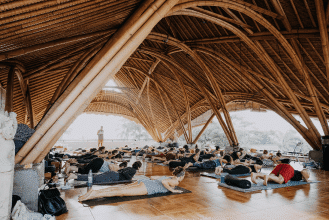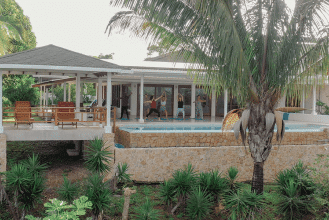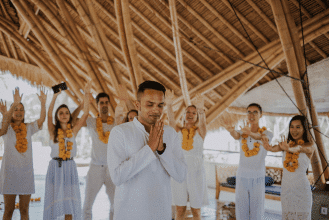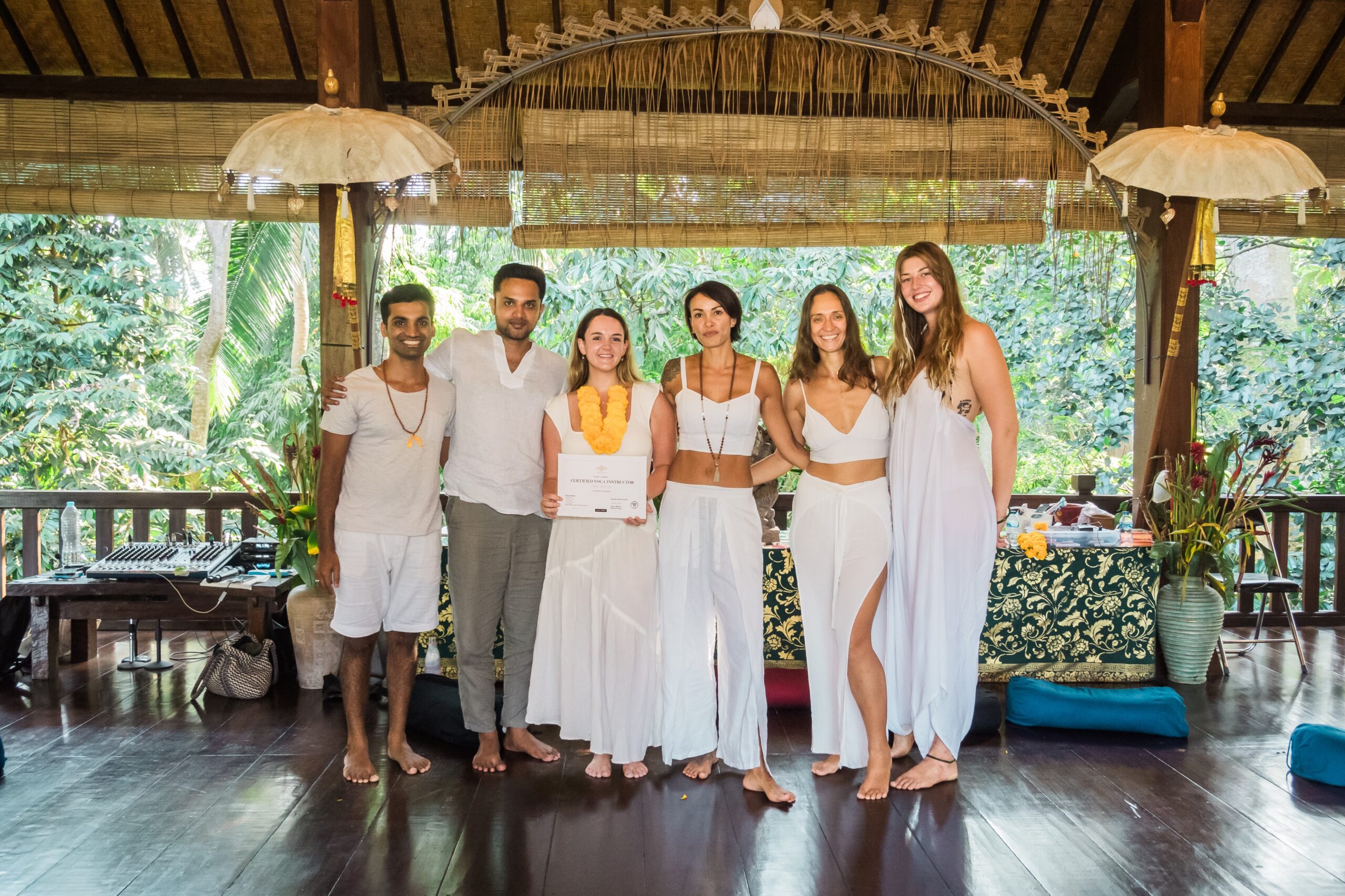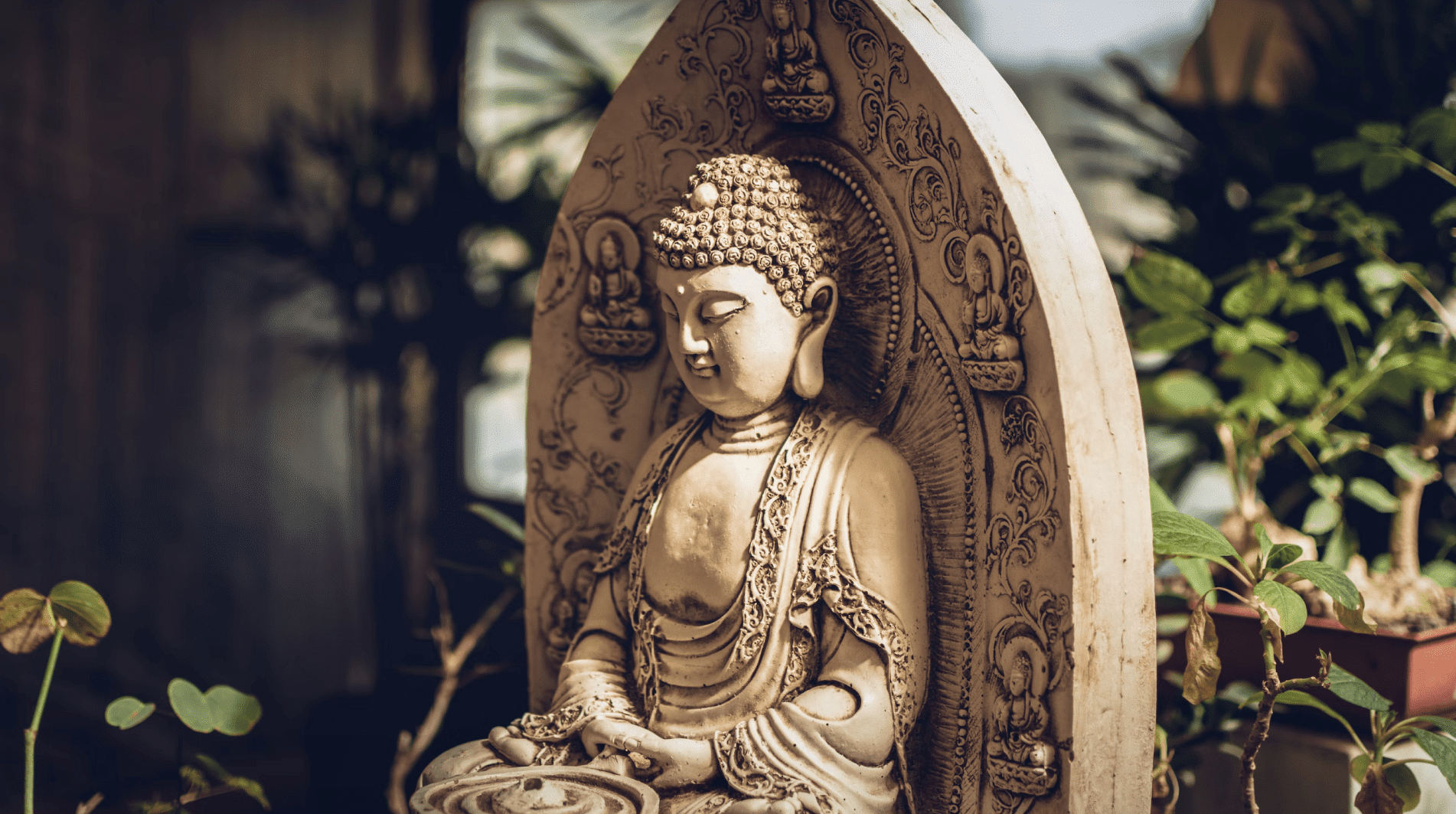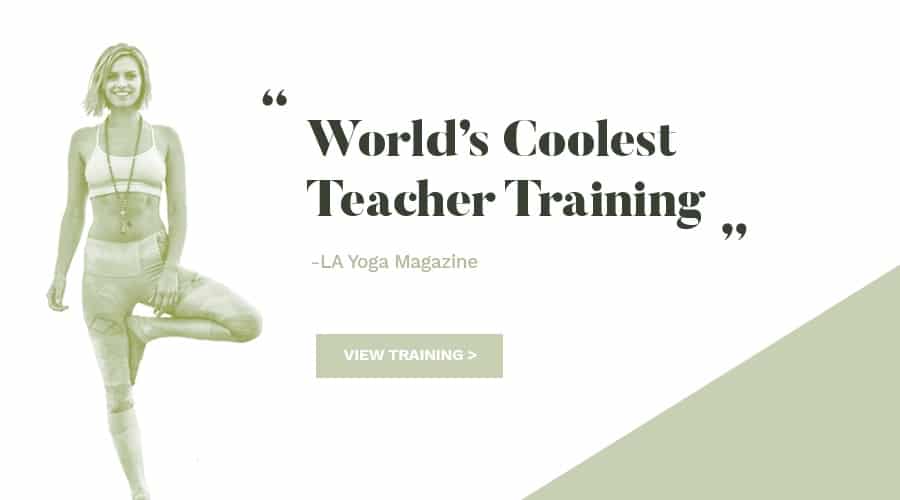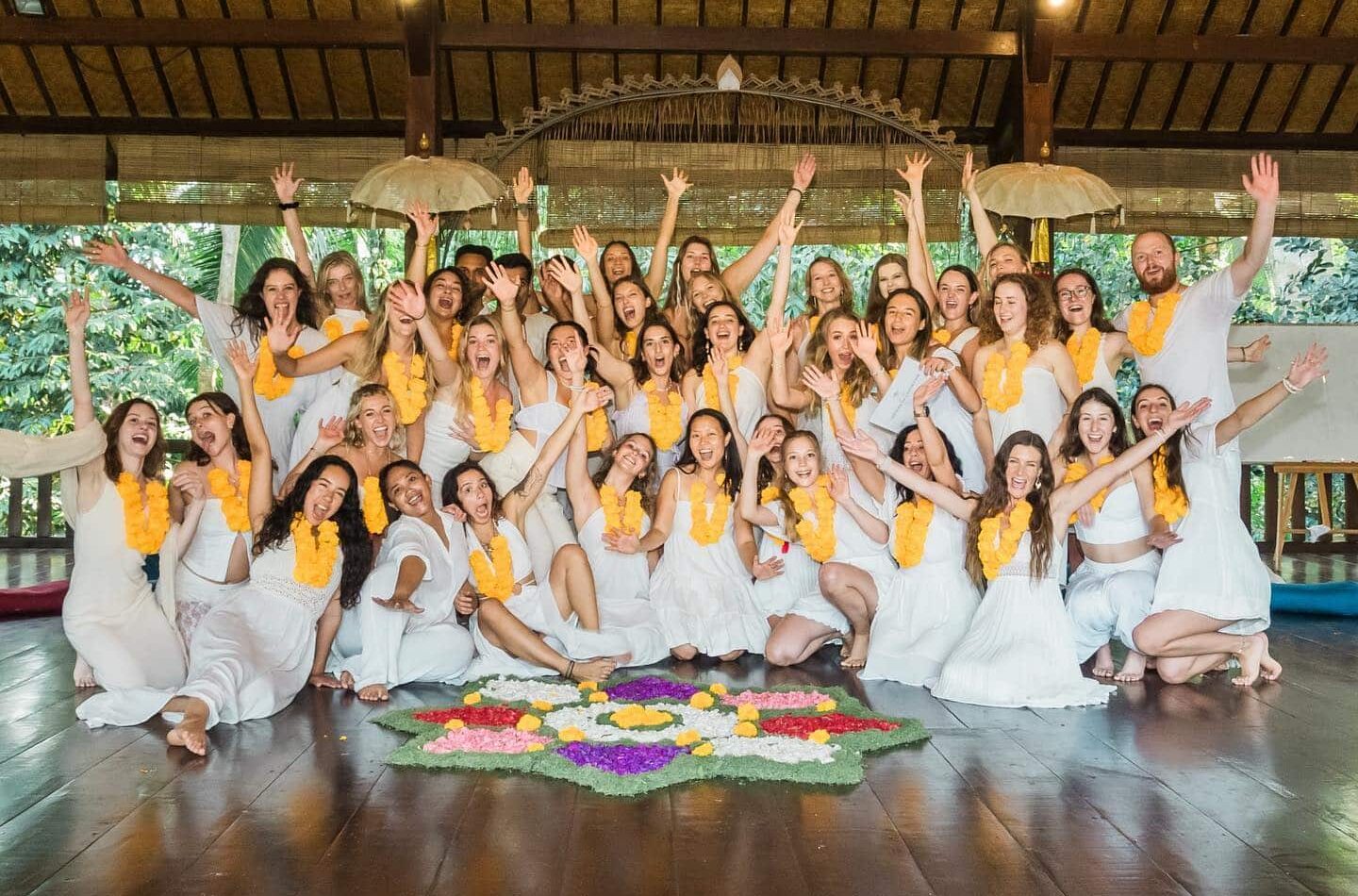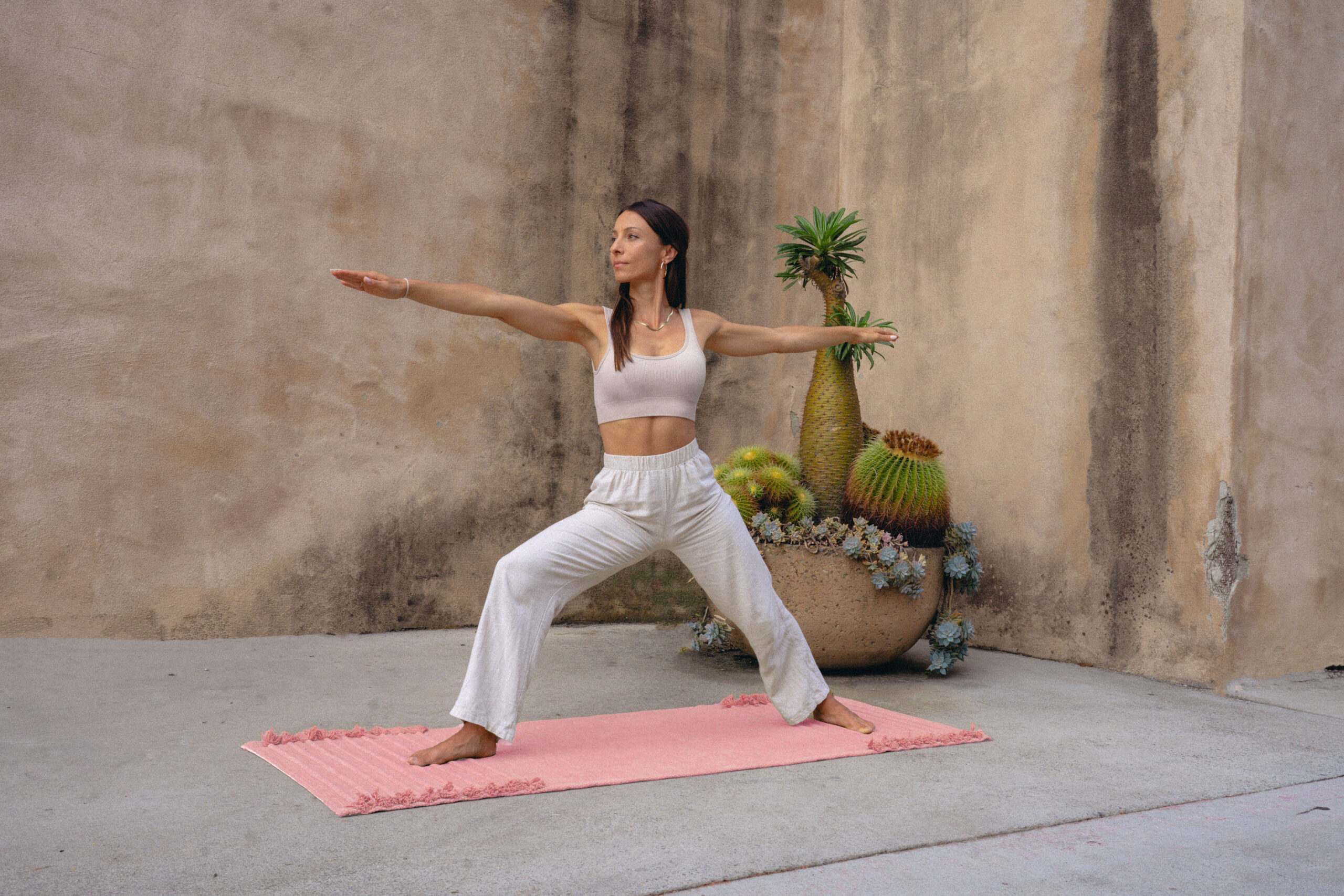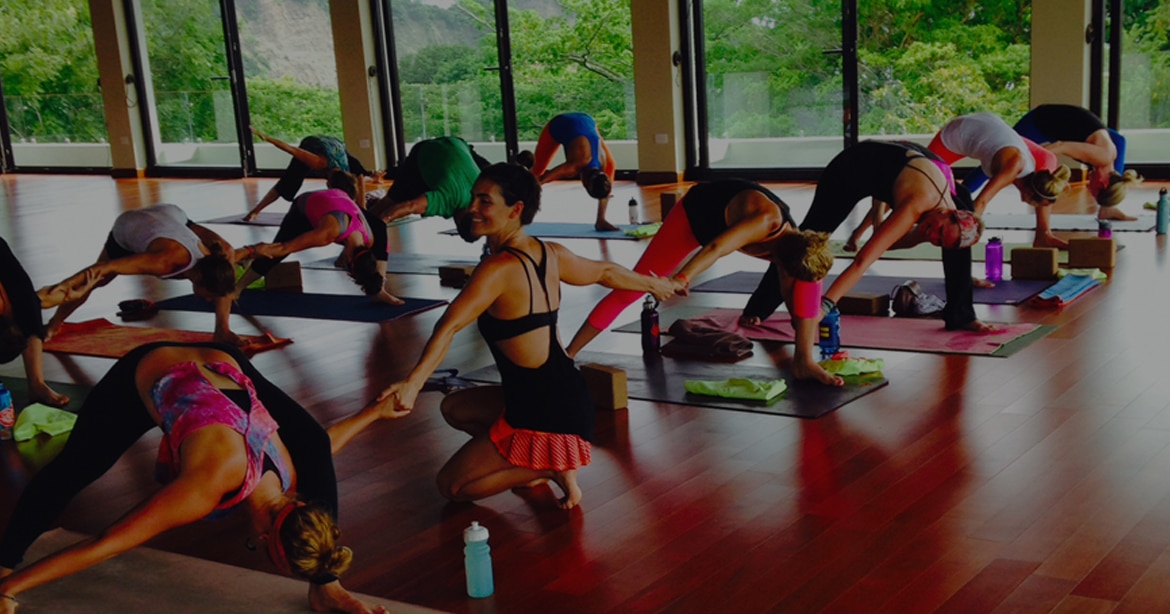
Welcome, future teacher of yoga. If you’re reading this, you’ve come to the right place. Below is everything you must know while planning to become a yoga teacher. Sit back, grab a glass of green juice, and delight that you now have everything you need to be able to choose the best yoga teacher training program for you.

Yoga is downright infectious. It creeps up on you slowly. It will start with one class. Then a 20 class package. Then the unlimited monthly. Suddenly you’re taking 5 classes a week and still wanting more. You and your yoga practice are having a serious love affair.
How did you get by without this? Trust me, all yogi’s go through this, it’s not only you. A few months later, your stress levels are almost non-existent, your body is deeply relaxed, your relationships feel more full, and for the first time in a while, life feels easy.
But it still doesn’t feel quite complete yet, you know there’s more out there. You want to go deeper. You want to enrich your life with more ease, more balance, more celebration and more joy.
A yoga teacher training is exactly the place to find what you are looking for. There are many reasons the yoga teacher training is, in my opinion, the best opportunity to go immerse into yoga. Mainly:
- Going deeper into your daily practice.
- Learning about the ancient history of yoga.
- Developing a deeper connection to your spirituality and inner-power.
- Developing life-long friendships (and possibly even romance) around yoga.
- Adventuring in a foreign country, or a tropical paradise.
These are just a few of the reasons to consider when planning on doing a yoga teacher training. Whatever your reason is, doing a yoga teacher training is always a good idea. I can speak to it first hand that all these come true if you dig into a yoga teacher training program. Whether you plan to teach as a profession, or just want to embark on a journey of deepening your self-love, it’s always worth it.
While they vary greatly, the vast majority of 200-hour yoga teacher training programs cover similar topics.
What to expect
- The ancient history and philosophy of yoga.
- The proper way to sequence and perform the poses.
- Developing your daily practice so you can practice alone (very important).
- Teaching methodologies.
- Meditation and breathing techniques (pranayama).
- Health and Ayurveda – the Indian holistic health system.
There are many different styles of yoga and many different types of teacher training. Programs range from 30 days intensive to extended, year-long weekend programs, or a mix of both. There are training that accommodates anyone’s schedule and needs, style of practice, and budget. The extra time you take to research programs will pay off. When I did mine, I researched for about 2-3 months. If you are just starting your research, here are the basic types of certifications:
- The 200-hour certification is the first level of certification. It’s not required to teach, but most major studios require it.
- The 300-hour certification comes after you’ve done your 200 – this can be completed separately and almost always is. It’s often broken into 100-hour modules – 1 week each. Once you complete this you will have your 500-hour certification.
- The 500-hour certification is a combination in a single training. Most don’t go this route, for obvious reasons.
Once the 200-hour training is finished, you can expand your certification and get more specialized with:
- Yin/Restorative Yoga
- Pre- and Post-Natal Yoga
- Yoga for children
- Yoga for pain management
- Kundalini yoga (they have a different certification altogether)
The amount of ongoing education is truly endless. Most great teachers will also end up doing training more than once with different teachers to get different flavors of practice.
What you must know about the certification
The Yoga Alliance is the governing organization that certifies yoga teachers, and the inventors of the certification process. Honestly, the certifications don’t mean that much. To put it into perspective, many of the best yogis in India are not certified by the Yoga Alliance. However, it’s important that you find a program certified by the Yoga Alliance as a baseline standard. There are some schools out there that are just truly awful.
- For more information about the certification process – click here.
- To find Yoga Alliance registered schools – click here.
So now that you have a basic understanding of the process, let’s dig into what you really need to know to start choosing your program.
30 Day Intensive Programs
In the 30 days intensive program, students are in training just about all day– from sunrise to sundown. It feels a lot like being in school again. The typical day usually includes 1-2 yoga classes, a meditation session, an anatomy class, a philosophy class, of course with regular breaks for breakfast, lunch and dinner. The structure is generally quite strict and depending on which program can be very challenging. A few things to know:
- Intensive training can be found throughout the world– India, Bali, Thailand, Greece, Italy. It’s common for them to be held in beautiful, exotic locations.
- The cost can vary significantly. You can find some in India for less than $2,000, but I would not recommend these. A good program is typically $3,000 – $7,000 and usually includes all accommodation, food, training manuals, and some other nice perks. Flights are almost never included in the price of the training.
- Popular programs (that I know of) are: East West Yoga Institute in Bali, Anamaya Resort (Costa Rica), Kripalu Center for Yoga & Health (Massachusetts), Ananda School of Yoga & Meditation (California), Himalaya Yoga Valley (India, Spain, Thailand, Ireland), Sivananda Yoga Vedanta Centres.
This is a small list of programs, there are literally thousands out there.
Part-Time or Year-Long Programs
If you work full time and cannot commit to a month-long intensive program, you have the option to take a part-time or year-long program. These programs are common at large, popular studios like YogaWorks and CorePower. Each program is very different. Get a feel for the yoga studio before you sign up for their training. You’ll get an idea of what the training will be like based on the style of yoga they practice.
- The cost will typically range from $2,000 – $4,000, which includes only the tuition and course materials.
- It’s less expensive, but students who do intensive programs are usually better prepared. It’s easier to go deeper when all you are focusing on is yoga. The value is also typically better for the intensive programs as it includes accommodation and food.
Doing a local program is a great way to break in as a teacher- it’s the best way to get in with the studio you want to teach with. Most studios favor the teachers they train in their programs. The key here is to research who’s leading it, what their certification and focus is, what the schedule will be, what type of guests they include, and what level of certification you will be receiving. Popular part-time programs include YogaWorks, CorePower (if you want to go the corporate route). Check your local studios for their programs, most have them nowadays.
Mixed Programs
Mixed training programs are a combination of daily classes, weekend workshops, week-long intensives, and additional assignments. This format is awesome if you work full or part-time or are in school and can’t do a 30-day program, but want more than just the part-time training. It provides flexibility and a good mix of both.
- Mixed mode programs are available locally (harder to find) and also in off-site schools.
- The cost will vary depending on the length, location, and teacher, but typically range between $3,000-$7,000.
- Programs like this can be found worldwide. In the US some of the popular programs are at Dharma Yoga Center (New York), Kripalu (Massachusetts).
There are many, many more. I highly recommend doing research.
Training with “YOGA-CELEBRITY”
Like anything, yoga too has celebrities – though their reach is typically smaller than TV celebrities. These people have thousands of Instagram followers, sponsorships from Lululemon, and teach classes at festivals for hundreds of people at a time.
The cool thing about yoga is you have the ability to meet and study under these people. They are typically very accessible.
- These programs are usually significantly more costly. The program cost will typically fall in the $4,0000 – $10,000 range.
- Famous yogis that offer teacher training include Shiva Rea, Kia Miller, Kathryn Budig, Meghan Currie, Noah Maze, Baron Baptiste.
If you choose this route, take time to connect with this person, take their online classes and get to know them and their practice beyond just their social media presence. Do not get swayed simply by their status. This is a big decision so again, take the time to research.
Specific Style Programs
There are many, many styles of yoga, and you can also choose a training based on the style you want to teach.
Make sure if you go this route first that you are very clear that you want to teach in this style. Often times yogi’s change their minds and are drawn to new practices as they advance in their personal practice.
For example, I know many teachers who started with an Ashtanga practice but evolved to want to teach Kundalini or Hatha yoga. If unsure of what style to go for:
- Start to pay closer attention in your yoga classes.
- Take a program that teachers from a variety of styles.
- Try practicing some different forms of yoga like Kundalini, Bhakti, or Hatha to get a sense of the differences.
It’s really important to experience different avenues of yoga, as it’s a vast world with many many options. Follow your heart. Developing your practice is not about doing what people in the past have done but exploring your unique path.
This is just a very brief overview of what you should know and what to expect. If you are like me, you are likely feeling excited, but also overwhelmed and a little scared. This is very normal. Rest assured that yoga is so much more than just a phase in your life.
My #1 tip is to not let this initial fear prevent you from going to the program you really want. This is a lifelong practice and this is your foundation. Nothing is more important than connecting with your heart.

It’s a lifelong endeavor that will be with you forever, and this is just the beginning. Don’t ever lose your confidence or feel you are not doing enough. You are doing exactly what you are supposed to be doing. Keep practicing and keep going deeper.
The universe will take care of the rest.
